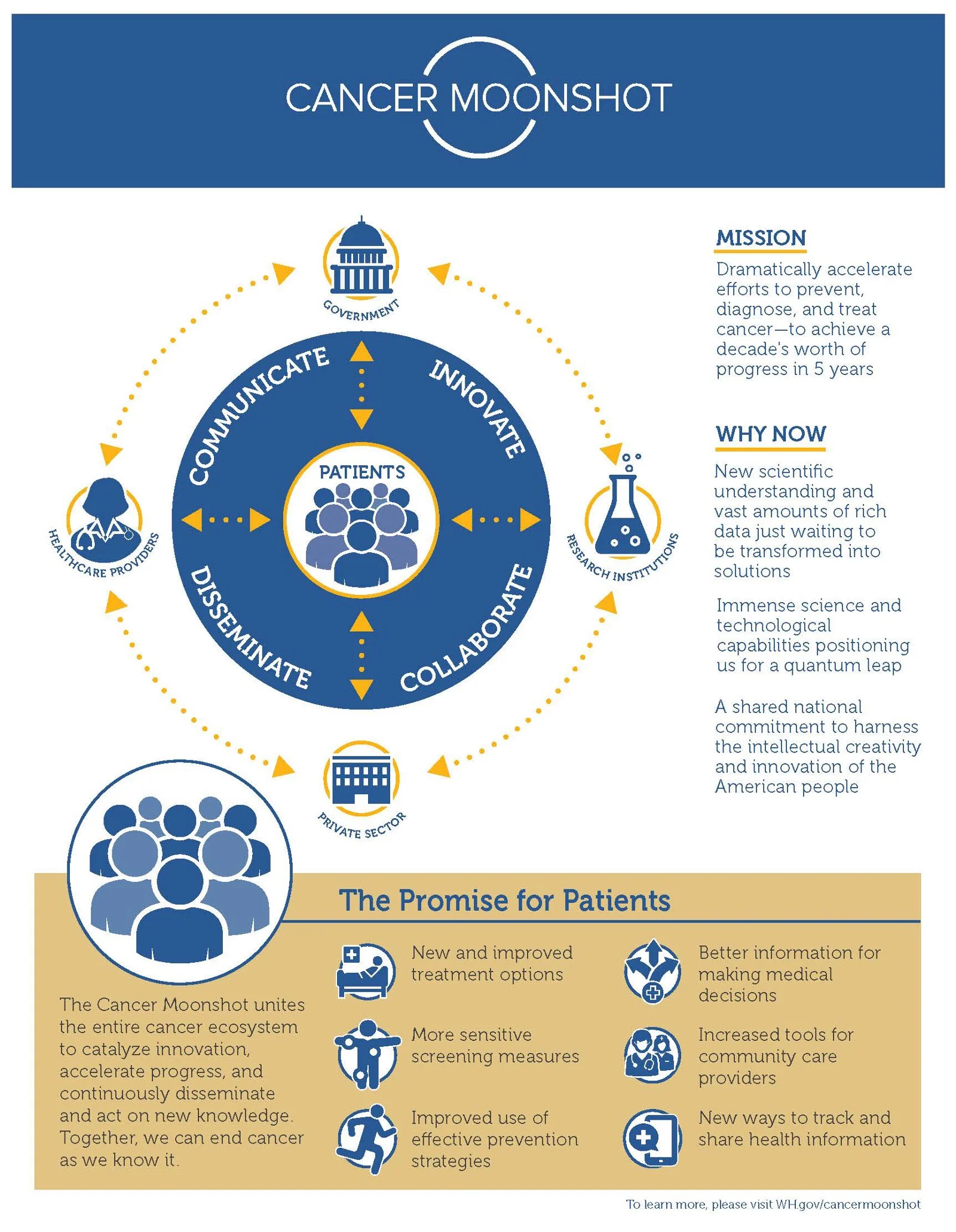A Researcher’s Guide to the Cancer Moonshot
Leah Cairns
One year before leaving office, then President Obama and Vice President Biden announced the Cancer Moonshot, a new initiative to drive cancer research forward by achieving 10 years’ worth of research in 5. They envisioned a combined effort by the government, private industry, researchers, physicians, patients, and philanthropies to cure cancer. Experts have since weighed in with recommendations on how to achieve this lofty goal, and funding mechanisms for collaborations and research are in place. This brief overview is meant to provide researchers with an idea of the goals and the funding mechanism of the Moonshot, and to guide a researcher who is interested in policy in finding opportunities for advocacy.
In April 2016, the National Cancer Advisory board established a working group called the Blue Ribbon Panel to serve as a source of expert voices in the cancer field. The Panel consisted of leaders in research, clinical treatments and trials, patient advocacy, pharmaceuticals, and biotechnology. The Panel divided into seven working groups, each focused on specific areas of need. In September 2016, the Panel released their final report containing the following 10 recommendations to achieve the goals of the Moonshot[i]:
Create a network for direct patient involvement in cancer research
Establish a translational science network for cancer immunotherapy
Identify new therapeutic targets to overcome drug resistance
Create a National Cancer Data Ecosystem to share and analyze large datasets
Increase research on fusion oncoproteins that drive childhood cancers
Minimize the side effects of current therapies to improve patient quality of life
Expand strategies for prevention and early detection of cancers
Analyze past patient data to better predict future patient outcomes
Create a 3D cancer atlas of the tumor microenvironment throughout the course of cancer development
Develop new technologies for detection, characterization, and treatment of cancers
These 10 recommendations will serve as a guide for future funding mechanisms and collaborations facilitated by the Cancer Moonshot initiative. In December 2016, the 21st Century Cures Act was signed into law, which allocated $1.8 billion towards the Cancer Moonshot initiative, $300 million of which was dedicated for fiscal year 2017[ii]. The first round of funding for the Moonshot began in September 2016. Many grants are currently seeking applicants in five of the Panel’s 10 areas of focus, and can be found at www.cancer.gov/moonshot. Although the Trump administration has proposed a budget that would cut NIH funding by 18%, it is likely that Congress will continue their bipartisan support for cancer research funding
In addition to their recommendations, the Blue Ribbon Panel identified areas of policy that need to be addressed in order to execute their recommendations, but were beyond the scope of their panel or expertise. These issues include:
Healthcare coverage and reimbursement
Privacy and consent in handling patient data
Fragmentation of patient care
Improvement of the clinical trials system
Increased development of pediatric drug treatments
Innovative federal research funding models
Barriers to data sharing
Equity in implementation of policy-related recommendations as it pertains to racial and ethnic minorities and other underserved populations
These issues present opportunities for students and researchers who are interested in policy to find a cause that they are passionate about, and to focus their advocacy work.
More information about the current progress of the Moonshot can be found at www.cancer.gov/moonshot and https://medium.com/cancer-moonshot
[i] Cancer Moonshot Blue Ribbon Panel, (NCI, 2016); www.cancer.gov/brp.
[ii] https://www.cancer.gov/news-events/cancer-currents-blog/2017/moonshot-funding-opportunities


